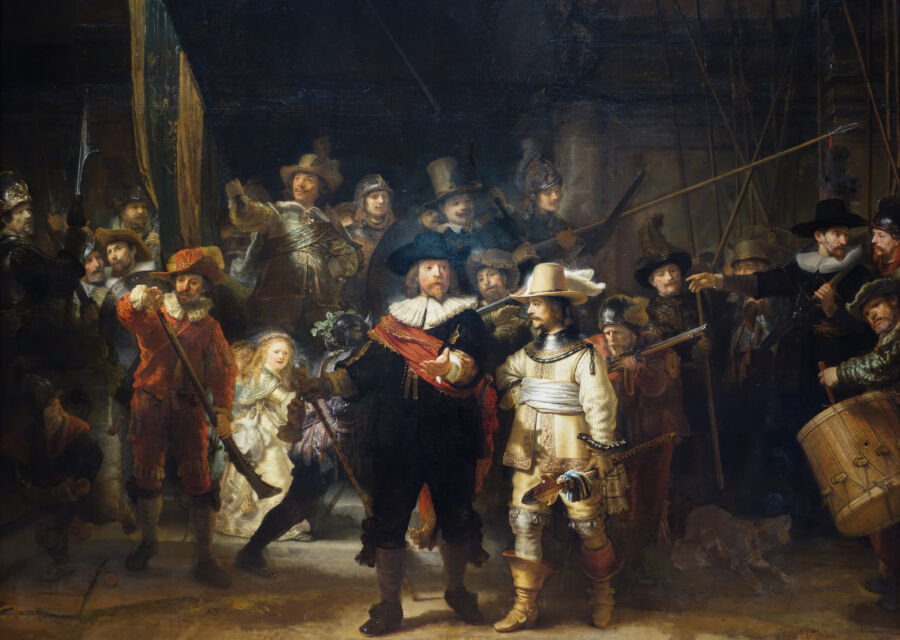The Night Watch is Rembrandt’s largest and most famous — though not necessarily his greatest — painting.
As America continues to suffer crisis upon crisis, it has never been more important to broaden our perspectives and learn about the people and places that shape our world. And for me, one of the great joys of travel is seeing art masterpieces in person. Learning the stories behind great art can shed new light on our lives today. Here’s one of my favorites.

Created in 1642, when he was 36, The Night Watch came from his most important commission: a group portrait of a company of Amsterdam’s Civic Guards to hang in their meeting hall.
It’s an action shot. With flags waving and drums beating, the guardsmen spill onto the street from under an arch. It’s “all for one and one for all” as they rush to Amsterdam’s rescue. The soldiers grab lances and load their muskets. In the center, the commander (in black, with a red sash) strides forward energetically with a hand gesture that seems to say, “What are we waiting for? Let’s move out!” His lieutenant focuses on his every order.
Why is The Night Watch so famous? Well, it’s enormous, covering 170 square feet. The guards are almost life-size, so it seems like they’re marching right out of the frame and into our living room.
In its day, The Night Watch was completely different from other group portraits. Until then, subjects were seated in an orderly group-shot pose with each face well-lit and flashbulb-perfect. The groups commissioning the work were paying good money to have their mugs preserved for posterity, and it was ego before artistic freedom.
By contrast, Rembrandt got the Civic Guards off their duffs and showed them doing their job — protecting the city. He added less-than-heroic elements that gave it a heightened realism, like the dwarf and the mysterious glowing girl holding a chicken (the guards’ symbol). Rembrandt’s trademark use of a bright spotlight to highlight the main characters made it all the more dramatic. By adding movement and depth to an otherwise static scene, he took posers and turned them into warriors, and turned a simple portrait into high art.
OK, some Night Watch scuttlebutt: First off, the name “Night Watch” is a misnomer. It’s actually a daytime scene, but Rembrandt finished his paintings with a preserving varnish. Eventually, as the varnish darkened and layers of dirt built up, the sun set on this painting. During World War II, the painting was rolled up and hidden for safekeeping. Over the years, this stirring painting has both inspired people and deranged them. In 1911, a madman sliced it with a knife, in 1975, another lunatic cut the captain’s legs, and in 1990, it was sprayed with acid.
The Night Watch was a smashing success in its day. Rembrandt had captured the exuberant spirit of Holland in the 1600s, when its merchant ships ruled the waves, and Amsterdam was the center of the first global economy. These guardsmen on the move epitomized the proud, independent, and upwardly mobile Dutch. On an epic scale, Rembrandt created the definitive “portrait” of that single generation of people that re-invented the world — the era we call the “Dutch Golden Age.”
This art moment — a sampling of how we share our love of art in our tours — is an excerpt from the new, full-color coffee-table book “Europe’s Top 100 Masterpieces” by Rick Steves and Gene Openshaw. Please support local businesses in your community by picking up a copy from your favorite bookstore, or you can find it at my online Travel Store. To enhance your art experience, you can find clips related to this artwork at Rick Steves Classroom Europe; just search for Night Watch.